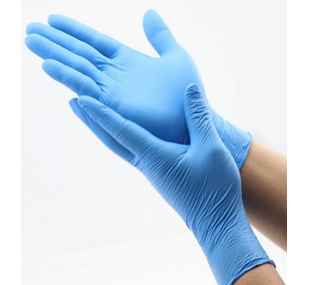PPE and its importance
Personal protective equipment, commonly referred to as "PPE", is equipment worn to minimize exposure to hazards that cause serious workplace injuries and illnesses. It exists to safeguard the wellbeing of workers and is vital in terms of best practice and risk mitigation. It is worn to minimize workers’ exposure to occupational safety hazards that cause serious injuries and sometimes lead to prolonged illnesses.
Before putting on a piece of equipment, one should inspect it to confirm it’s sanitary and good working order. If any damage or defect is noticed, it’s best to err on the side of caution.
According to OSHA PPE standard 1910.132(f)(1), workers need to be trained on the following:
- When PPE is necessary
- What PPE is necessary
- How to properly don, doff, adjust, and wear PPE
- The limitations of the PPE
- And the proper care, maintenance, useful life, and disposal of the PPE.
Types of PPE used in the medical setting
Preferred PPE consists of:- Face shield or goggles
- N95 or higher respirator.
- One pair of clean, non-sterile gloves
- Isolation gown
1) Face shield or Goggles
Face shields provide a barrier as they confer protection to a larger area of the face. They are commonly used as an alternative to goggles. Face shield, however, must be worn along with face mask for high effectiveness. Also, the face shield prevents the wearer to touch her face unconsciously. Goggles are recommended as an alternative to face shield and must be worn along with a mask for total coverage. |
| Face shield and Goggle |
2) PPE Mask
The two types of masks are categorised by CDC into the following categories:i) Preferred PPE - Respirators:
 |
| N95 Respirator |
ii ) Acceptable PPE- Face masks:
 |
| Face masks |
A face mask is a loose-fitting mask that covers the nose and mouth area. Face masks are designed to be used as one-way protection only. It captures only large particles or droplets from the wearer and preventing them from being spread to the environment. They are typically used to prevent the spread of the flu.
3) Non-Sterile disposal gloves
There are two main types of medical gloves: examination and surgical. Surgical gloves have more precise sizing with a better precision and sensitivity and are made to a higher standard. Examination gloves are available as either sterile or non-sterile, while surgical gloves are generally sterile. |
| Medical gloves |
4) Isolation gown
The basic raw materials typically used for disposable isolation gowns are various forms of synthetic fibres (e.g. polypropylene, polyester, polyethylene).
 |
| Isolation gown |
References
1) Centres for disease control and prevention (CDC): Interim Infection Prevention and Control Recommendations for Patients with Suspected or Confirmed Coronavirus Disease 2019 (COVID-19) in Healthcare Settings (Update April 13, 2020)
2) World Health Organization (WHO): Personal protective equipment (Introduction and definition)
3) GOV.UK: COVID-19 personal protective equipment (Update April 17, 2020)
4) OSHA

